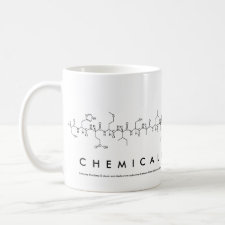
Authors: Pan J, Xue XH, Wang JH, Xie HM, Wu ZY
Article Title: Recognition property and preparation of Staphylococcus aureus protein A-imprinted polyacrylamide polymers by inverse-phase suspension and bulk polymerization.
Publication date: 2009
Journal: Polymer
Volume: 50
Issue: (11)
Page numbers: 2365-2372.
DOI: 10.1016/j.polymer.2009.04.004
Alternative URL: http://www.sciencedirect.com/science/article/B6TXW-4W26GF0-8/2/a63a932d019fb8070b6d9bf112f11d8a
Abstract: Staphylococcus aureus protein A-imprinted polyacrylamide gel beads (SpA-IPGB) and imprinted polyacrylamide particles (SpA-IPGP) were synthesized by inverse-phase suspension polymerization and bulk polymerization, using SpA as template, acrylamide (AM) as functional monomers. Recognition capacity studies of the prepared SpA-IPGB and SpA-IPGP on SpA and S. aureus were conducted to determine recognition specificity. Computer imitation docking studies were conducted between template proteins and acrylamide monomer to reveal the recognition mechanism of SpA molecularly imprinted polymer. The results showed that the imprinted gel beads had high adsorption capacity and specificity to the SpA and S. aureus, and the adsorption quantity could reach 6.85áÎá10-3áμmol/g and 103-104áCFU/g. The adsorption capacities of SpA-IPGB on SpA and S. aureus were higher than that of SpA-IPGP and Non-imprinted polyacrylamide gel beads (Non-IPGB). The recognition specificity of SpA-IPGB and SpA-IPGP on S. aureus was much higher than on Escherichia coli and Streptococcus thermophilus. The formation of complementary shape, and hydrogen bonding, electrostatic, and hydrophobic interactions between the imprinting cavities and the template proteins is the driving force for effective and specific recognition of protein imprinted polymer
Template and target information: protein, Staphylococcus aureus protein A, protein A, SpA
Author keywords: Staphylococcus aureus protein A, molecular imprinting, Inverse-phase suspension polymerization



Join the Society for Molecular Imprinting

New items RSS feed
Sign-up for e-mail updates:
Choose between receiving an occasional newsletter or more frequent e-mail alerts.
Click here to go to the sign-up page.
Is your name elemental or peptidic? Enter your name and find out by clicking either of the buttons below!
Other products you may like:
 MIPdatabase
MIPdatabase









